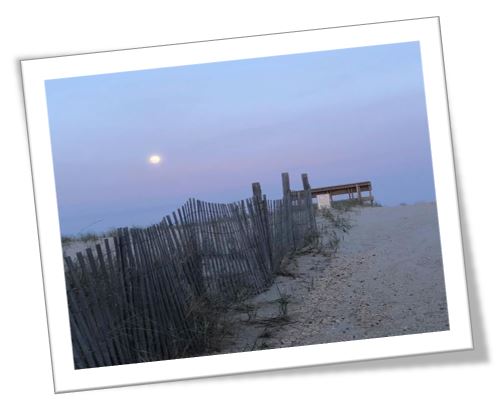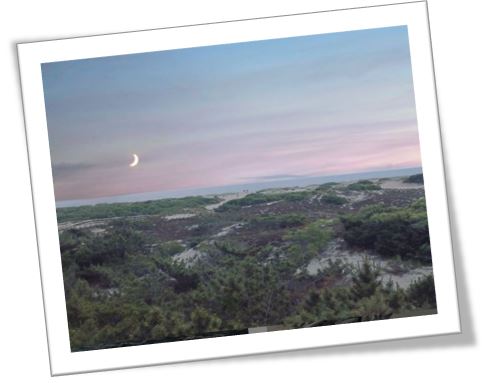Nathan Colmer | Van Dyk Group
C: 609.290.4293 | O: 609.492.1511
Nathan Colmer | Van Dyk Group
C: 609.290.4293 | O: 609.492.1511
Much more goes into a transaction on Long Beach Island than just the sale price. Buyers must consider the nuances of the LBI real estate market to ensure their purchase is sound and affordable. Above all else, the cost of flood insurance must be taken into account. This can have a real and significant impact on both the appreciation of a home and the long term ownership cost.

Make sure you buy a home with a low cost of flood insurance
Buying a home above base flood elevation will usually hold more value
Buying a home that fits with current trends will benefit you long term

Flood insurance is one of the most wildly discussed and least understood topics in the LBI real estate market. The amount of mis-information, often provided by insurance agents who are not familiar with coastal markets, is alarming and can lead to a poor investment.
Flood insurance premiums can constitute a major, or very minor depending on the factors below, portion of the monthly expense of a house on LBI. You should always consult with an insurance agent to have a full understanding of your unique situation but some of the major indicators of Flood Insurance Rates on Long Beach Island NJ are:
Current Flood Zone on Long Beach Island: Most of LBI lies in either an A or a V zone. V zones are considered riskier and typically carry a higher flood premium.
The elevation of the first floor: Contrary to what the general impression is, not every home on Long Beach Island needs to be raised. Elevation is an equation of both the natural ground elevation (most of LBI is around 4-7 feet) and the elevation of the structure. even in the case of the traditional Cape Cod style house, there is about 2-3 feet of elevation in the foundation. The end result is many homes on Long Beach island are already at their Base Flood Elevation and do not require raising to avoid high Flood Insurance Rates on Long Beach Island NJ. Obtaining an elevation certificate is the best way to determine this.
Proximity of the house to a high risk flood area on LBI: As I mention above, most of LBI is either an A or a V zone. A V zone is considered to be the higher risk area so if your property is located on the border of a V zone, it may be prudent to rebuild to V zone standards in case the area is remapped in the future.
Flood Insurance Rates on Long Beach Island NJ are based on Risk: the National Flood Insurance Program is designed to base the flood rate on the risk of the property. In general, if a property is located in a higher risk area, such as a V zone, you will pay more in flood insurance unless you take additional steps to safeguard the property. Additionally factors such as crawl space elevation (above or below grade) can influence Flood Insurance Rates on Long Beach Island NJ. Therefore if you buy a home that carries a higher degree of risk and subsequently a higher cost of insurance, it is reasonable to assume it will be negatively impacted in a falling market.

Flood insurance rates are based on the property’s elevation above Base Flood Elevation or BFE. Generally speaking, the higher a property is above BFE, the lower the rate will be (up to 3-4 feet above BFE). On the other side of the coin, the lower below base flood elevation, the higher the flood insurance cost will be for a property on Long Beach Island. Special conditions will also apply when rating flood insurance costs on Long Beach Island NJ such as if the property has a basement (and believe it or not there are homes on LBI that have basements!), the number of flood vents in the foundation, if the crawlspace is below the grade of the property and most importantly the flood zone in which the property is located. Flood zones on LBI generally fall into an A or a V category. Most of Long Beach Island lies in an “A” flood zone which generally sees lower rates and easier building restrictions (for example, a block foundation in permitted in an A zone). A V flood zone on Long Beach Island will not only see more stringent building requirements but also generally a higher flood insurance rate. In order to be placed in a V zone, the property must be suspected of sustaining a direct wave impact of a 3 foot or higher wave. For this reason, V zones are generally limited to the oceanfront and certain bay front areas.
There are a few key terms that are essential to Understanding Flood Insurance on Long Beach Island New Jersey.
Base Flood Elevation: Also known as BFE this refers to the elevation above sea level a property is recommended to be built to. The BFE is obtained by combining the natural ground elevation with the foundation’s structure.
Flood Insurance Rate Map: Also known as a FIRM map, these maps are produced and distributed by FEMA and show the BFE of a certain area like Long Beach Island, the flood zone and risk premium zones.
Pre Firm: This term relates to homes built before the first FIRM date (December 31st 1974). Most of the Cape Cod style homes on Long Beach Island are considered to be Pre-FIRM construction unless they have been substantially improved.
Post Firm: This term relates to home built after December 31st 1974 and were built to the standards of flood elevation at that time. Post-FIRM homes on Long Beach Island are generally raised on pilings.
Buying a home that is above base flood elevation will be a much better investment in the LBI real estate market. This is not to infer that all homes below base flood elevation should be avoided, as many of them can have a lower than expect cost of insurance. Rather strictly from an investment point of view a home that is elevated will be perceived to be "safer" and draw a larger crowd of buyers.

There are many different types of homes on LBI. From the traditional Cape Cod to the raised ranch and of course the large contemporary new construction that we see being built today. The home style and layout of the property in question can go a long way to driving long and short term value in the LBI real estate market.
There are several basic home styles on Long Beach Island. They are:
Cape Cod: this traditional Beach house was developed mainly doing the 1950s and 1960s. They generally offer 4 bedrooms, 2 bathrooms, and around 1,200 Square feet of living space to 1,500 square feet of living space.
Raised ranch: this home was developed primarily in the 1960s through today in the LBI real estate market. The home usually consist of three bedrooms or four bedrooms and between 1,000 sq. feet and 1,200 sq. feet of living space.
Victorian: these homes are very common in Beach Haven’s historic district and areas of Barnegat Light. These homes generally date to the mid 19th century and are large beach houses with many bedrooms.
Contemporary: this is a broad subject they can range from homes built in the 80’s to homes built today. Generally these homes will be elevated above base flood elevation and will be some of the largest homes in the LBI real estate market.
Each home style on Long Beach Island offers different advantages and disadvantages. For example, the cape cod style home is a functional beach house layout that has been serving vacationers and year-round residents a like more than half a century. Unfortunately, many of these homes are below base flood elevation which leads to a higher cost of insurance. The raised ranch style home offers many of the amenities one would expect today, for example an open floor plan, central air conditioning, etc., but they are generally smaller. Understanding what your expectations and needs are when shopping for a home in the LBI real estate market can go along way to helping you focus on your search and find the right home.
Generally speaking a raised home will be a better investment and a reversed living layout is ideal. Non-reversed living homes can see a significant disadvantage in our market. Cape Cods certainly do have a place in the market as they have functional and traditional layouts, but it is best to offer an updated and renovated home to the market. Keeping all this in mind when looking to buy a home in a down market is key to the preservation and your short term and long term investment.